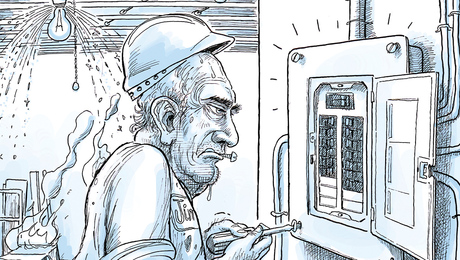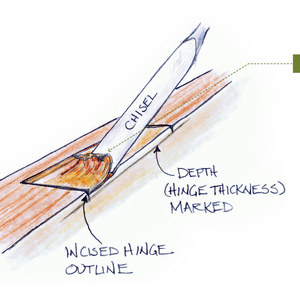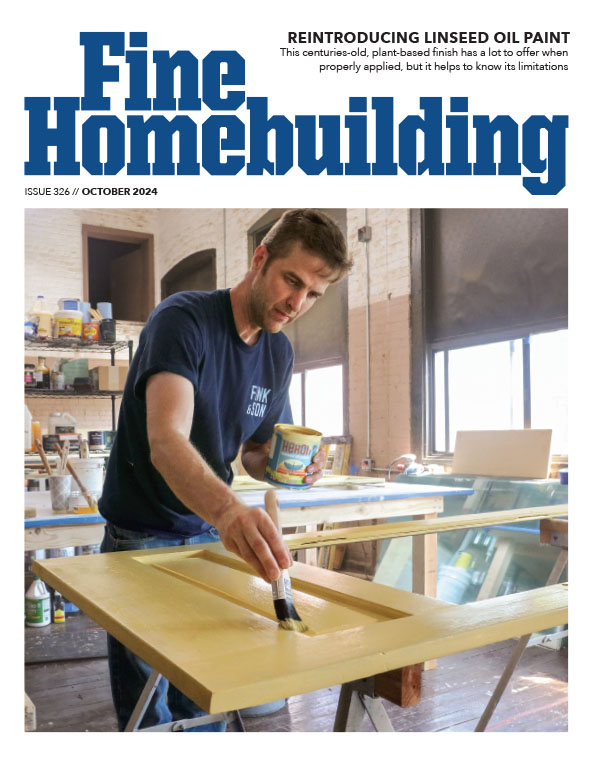I am hoping someone might be able to provide me with some help on how to help with drafty windows. The windows in question are single hung Crestline windows (white vinyl on the inside and outside) installed by our builder about seven years ago when we had our house built. Our house has 2×6 walls , vinyl siding and did have a house wrap if that matters at all. The builder has since gone bankrupt so I can no longer contact them. We did contact Crestline directly a number of years ago and they sent out a service rep who said it was a framing issue and did do some caulking around the inside of the frames.
I expressed to the builder at the time that I did not want these windows but they stated this is the only windows they offered. Anyway, now we are stuck with bad windows. On cold days during winter, a noticable breeze can be felt coming in around all windows (in some places the breeze is strong enough to extinguish a lighter).
Unfortunately we can’t afford new windows at this time. However, I would like to do whatever possible on a very limitied budget to improve their efficiency. Any tips/advice/suggestions will be greatly appreciated!
Discussion Forum
Discussion Forum
Up Next
Video Shorts
Featured Story

Dangerous electrical work and widespread misconceptions cause fires, deaths, and $1.5 billion in property damage annually.
Featured Video
How to Install Cable Rail Around Wood-Post CornersHighlights
"I have learned so much thanks to the searchable articles on the FHB website. I can confidently say that I expect to be a life-long subscriber." - M.K.
Fine Homebuilding Magazine
- Home Group
- Antique Trader
- Arts & Crafts Homes
- Bank Note Reporter
- Cabin Life
- Cuisine at Home
- Fine Gardening
- Fine Woodworking
- Green Building Advisor
- Garden Gate
- Horticulture
- Keep Craft Alive
- Log Home Living
- Military Trader/Vehicles
- Numismatic News
- Numismaster
- Old Cars Weekly
- Old House Journal
- Period Homes
- Popular Woodworking
- Script
- ShopNotes
- Sports Collectors Digest
- Threads
- Timber Home Living
- Traditional Building
- Woodsmith
- World Coin News
- Writer's Digest


















Replies
Here are some pictures:
Here are some pictures:
Probably the same reason as the cold laundry room.
At first blush, probably no insulation around the windows at the rough opening. In all likelyhood, the windows are ok, sealing and insulation are the problem.
Good luck.
So how can I fix this?
Unfortunately, you're kinda screwed.
You can often get an enormous improvement by taking off the interior trim and spraying foam in the crack between the rough framing and the wndow frame. I've done this with most of our windows and it made a big difference.
But you don't have interior trim, but rather the drywall is returned to the window frames, so you'd have to cut open the drywall to do much.
You can maybe remove the aprons under the window stools and spray some foam in there, without having to tear up much. It might help a little.
(Those windows should actually seal pretty well, unless the frames are racked or some such. Major leakage would be due to poor installation.)
I don't think you're "screwed" at all. But you do have quite a bit of work in store. Since the drywall wraps the window opening, that drywall will have to be removed. Likewise, the oak sill will have to be taken up. Once this is done, much will be revealed to you. You'll be able to see just how much, if any, insulation was placed around the windows. Probably there is a bit of fiberglass stuffed into the cracks. Perhaps there is nothing. Once you're in there, the nothing scenario is actually preferred since then you won't have to remove the insulation to make way for spray foam. This stuff comes in a can, you shake it up, spray it in, then trim off the excess. Masking off the adjacent surfaces is a good idea in a finished house. Be sure to get the low expansion foam that is made for windows and doors. Do not use the high expansive stuff.
After you've foamed the window you can replace the sill then the drywall. By the way, when removing the drywall, cut it within the window return area so as to not damage the already finished corner. This will make repair much easier. Alternatively to drywall repair, you could devise some painted trim that covers the area with some drywall tacked in behind simply for backing. The trim, painted to match the wall, will visually blend in and never be noticed again.
Now... there is a chance that once you open up the window area you will see water damage due to improperly flashed windows. If this is the case you have a much bigger job ahead of you. But don't neglect to do it as any water infiltration can cause major damage.
There's another side to this equation. Where is all that air that's leaking in going? I would guess you have some serious holes in the top of your house where warm air is leaking out, then sucking in replacement air around the windows. Rather than post a long bunch of words here, I'd recommend you take a trip to greenbuildingadvisor.com and search on "attic air sealing".
Andy... While I don't disagree that the OP should address attic leaks, there are multiple ways for air to leak out of the house. For instance: every bath vent is designed to pass air, likewise a kitchen hood, and a fireplace. Additionally, for this OP in particular, air will undoubtedly leak in windows on the windy (high pressure) side of the house while leaking out the downwind (low pressure) side.
Drafty home = poorly fitted windows and doors, and what else?
Everyone agrees that the windows themselves are fine...the problem is the way they were fitted.
You simply have to remove the drywall, look inside and fill all the gaps with low expansion foam.
While you are there check on the existing insulation.
While it is obvious that cold air coming in through the gaps round the badly fitted windows = other air going out. It is a fact that once these holes are filled, your home will be a lot warmer.
The thing to do is, turn on the exhaust fan in the kitchen and close all doors and windows, then go round the kitchen window and check it for drafts , then check the kitchen door to the yard.
Having draft proofed the kitchen, then go room to room, checking every window and door. If you leave the exhaust fan running on high and the doors open between the kitchen and the room tested this will help you find the badly fitted windows.
As the windows were fitted badly, it is just as likely that you have gaps and cracks in the floors, walls and ceilings... this may turn into a long job. Stick with it as those drafts are costing you good money. Once all the drafts are fixed your home will be warmer in winter and cooler in summer.
Get an energy audit.
Get a professional energy audit. Many utilities will subsidize the cost. They hang a large fan in an exterior doorway to create suction, plus they know what they are doing. Many utilities also provide some sort of rebate for the insulation costs after the audit.
In the long run, I think this is the cheapest solution to identify the total scope of the work. These costs will ultimately be recovered by your reduced energy costs. Which could be substaintial based on your complaints.
I often suggest that new home owners get a basic home repair manual from one of the big box retailers or Amazon. It will provide step by step instructions and pictures for many common household repairs and maintenance.
IMHO, I think you ought to consider getting professional help. Depending on what the audit finds, you might want an insulation contractor or maybe just a talented handyman. A consistent problem with the DIY shows is that they make just about everything look quick and easy. There is no mention of the many years it took someone to aquire the skills that have been demonstrated.
You can't open and patch a wall without being able to mud a joint. That looks real easy on TV too, but it can be a nightmare to learn. Even something as simple as drilling a hole in a wall creates a risk of drilling into a live wire.
I think the most important thing any DIYer (and I am one) needs to know is: the limits of their knowledge or skillset.
Good luck.
I am trying to learn tact in my old age
"Heck, everyone here needs professional help, but it's bit unkind to point it out like that."
I know, you don't know how long I spent trying for a tactful wording. I did precede the suggestion with IMHO.
OTOH, the poster does seem to have numerous, serious problems that are beyond their skill set to resolve, what other option remains?
I once owned a bit of property with a relative. A back yard fence was needed, I told the relative we were going to hire someone to build the fence. He asked why we (meaning, of course, me; he can't hit a nail with a hammer) wouldn't just build it ourselves. "I have never built a fence before, I don't want to discover everything that I don't know about building a fence", was my reply.
So please forgive any faux paw.
Lot of advice
But has anyone asked where is the cold air coming in? If you have enough wind to blow out a lighter you should be able to spot the source.
Is it the window itself or around it? Coming through the drywall seems unlikely so where is it?
Vinyl siding & BK builder sounds like trouble but find the source before you start spending $.
Joe H
Finding and sealing the intake leak matters, sure, but it's also important to find and seal where the air is leaking out of the house. Air won't leak in unless there's a pressure differential to drive the motion. If you fix an intake leak without fixing the exhaust leak that's creating the pressure differential, you'll likely just increase the intake volume at some other leak. Drafts that will extinguish a lighter suggest some major air leaks.
pm
I think your solution this winter is to buy the clear 3M type window film-use the tape and plastic and seal them off on the inside.
For your future, better weather to work-measure the distance between the jambs-top-middle-and bottom. If there is a difference-you might take the time to attempt to reset the frames . This won't be easy by any means............and with the stone-maybe damn near impossible. The drywall returns add further to the problem-that's where you'd want to shim............
No wonder that builder is out of business-pity it didn't happen b/4 you met him.
I concur with the suggestion of the 3M film (though the horse may have left the barn by now). My wife correctly predicted a cold winter here and did several of our windows, and it made a big difference. (We'd done this in the past, but we've had this warm spell for the past 25 years and it wasn't necessary.)
I think what I am going to do is make a few interior storm windows with the 3M and a wood frame. That way I can see how much it helps and reuse them next winter.
pm
The beauty part of the 3M type window film is the seal that comes from the tape and plastic contact. It's possible to get a pretty darn good seal if you take your time. Adding a wood frame to the mix-you now have to get a good seal from frame to window and then too, it's fastening.
For several years I installed the tape/plastic system to my MIL's windows in a rental. I cut the plastic oversized and with care-could remove both the plastic and the tape w/o boogering up/tearing the sheets. So, I was able to reuse the sheets for many years.
The stuff is cheap (relatively speaking). And with a frame you will never reproduce the quality of the seal you get with the tape directly (and the seal is probably 75% of the benefit).
(Plus, if you're anything like me, you'll "mean to" make the frames for several weeks, by which time the need is gone. Using the film directly you can be done with your first window in 10 minutes.)
Simplest thing to do is to just seal the film to the metal frame above the stool, though this of course loses some of the sealing you'd like. But if you don't mind it being a little ugly you can stretch the film around the stool and seal it to the wall below.
pm
The window stool sure could use a refinishing. Applying tape to that as it is now might make tape removal not quite easy-residue and / or tape might not want to release.
There's alway interior "storms" that would work fairly well if a quality product and installed good.
The most horrible part of all this is that these are all bandaids being applied to stop the crap product/job to begin with. Worse yet, the ideal fix would be to replace-which would hemorrage money.
I really feel for you in this problem. It's a crime and the offenders should spend time for bilking the customer. They might as well hold you up on the street corner.